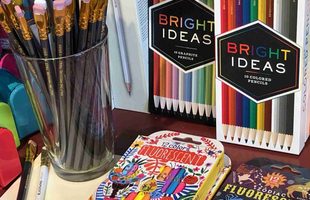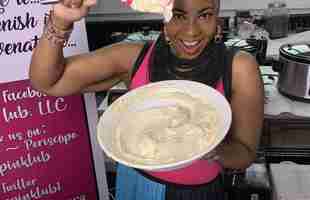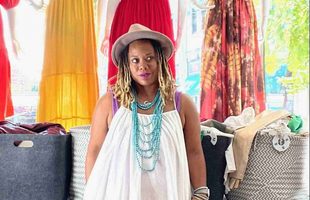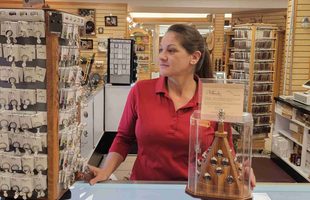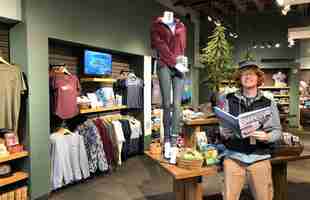When managers and buyers of gift shops at zoos, amusement parks and museums were asked about how to boost sales of souvenirs, they were filled with ideas. Regarding displays tips, Kathryn Swinimer, retail operations manager, Calgary Zoo, Calgary, Alberta, tends to arrange plush by species, and/or country of origin. “We use shelves, rolling bins, baskets and fixtures from vendors to display merchandise,” she said.
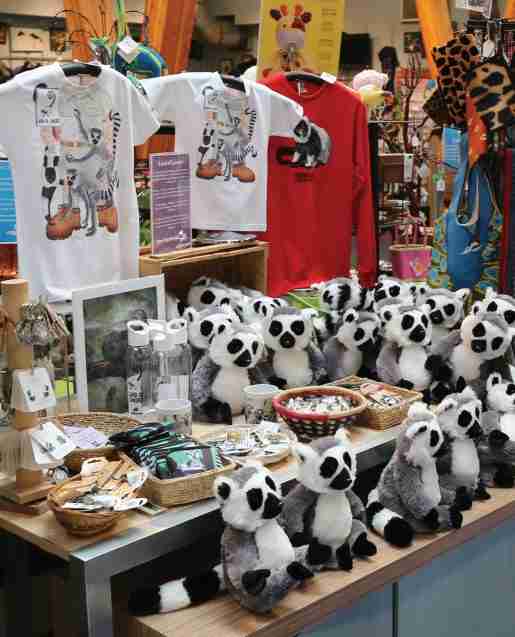 For the Calgary Zoo’s new exhibit, Land of Lemurs, the gift shop has a display that includes plush, hats, shirts, toys, water globes and other souvenir keepsakes.
For the Calgary Zoo’s new exhibit, Land of Lemurs, the gift shop has a display that includes plush, hats, shirts, toys, water globes and other souvenir keepsakes.When promoting an exhibit or species, Swinimer combines multiple products into one display. For its new exhibit, Land of Lemurs, the gift shop has a display that includes plush, hats, shirts, toys, water globes and other souvenir keepsakes.
Textiles are separated into adult, youth and child sections. “Most shirts and outwear are hung, although for some displays we fold them into piles by design,” she said.
“Retail should be ever changing,” Swinimer continued. “We regularly remerchandise almost all of our product lines to create new and interesting looks. If a product isn’t selling in one area, it often sells better by moving it to a new location.” The main shop is 5,000 square feet, while other stores are under 1,000 square feet. Sales exceed $2 million annually.
In an effort to boost souvenir sales, Emma Hill, store director at Boston Children’s Museum Gift Shop, Boston, Mass., has placed the souvenir section near the cash wrap. “We use clear bins for merchandising which are at kid’s reach so our littlest visitors are able to explore the merchandise,” she said.
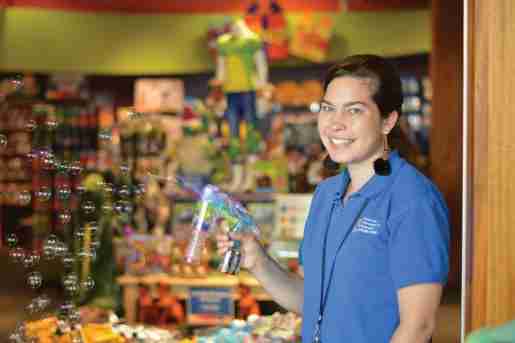 Emma Hill, store director at the Boston Children’s Museum Gift Shop in Boston, Mass. Hill has placed a souvenir section near the cash wrap in an effort to boost sales. Photo by Lex Piccione.
Emma Hill, store director at the Boston Children’s Museum Gift Shop in Boston, Mass. Hill has placed a souvenir section near the cash wrap in an effort to boost sales. Photo by Lex Piccione.At the Hemingway Home Museum in Key West, Fla., Melanie Mosher, bookstore manager, purchases souvenirs and gifts directly related to reading, writing and cats—since the property is home to American novelist, short story writer and journalist Ernest Hemingway, who had a lot of pet cats. “The store is very small and has to adhere to historical standards, so the space is limited to whatever creative means I can find to display merchandise,” she said. “The store also gets extremely crowded; at times people cannot even get through the entire display. To help with that, staff continually move products around, display products in two places and physically help people find what they may be looking for.
Staff is well versed on the history of the author, the home (where Hemingway lived and wrote for more than 10 years) and museum as well as the unique area, so they can assist in finding books and other souvenirs pertaining to their interests. “We also sell as many local artist products as we can,” Mosher said. “I encourage local artists to bring in art pertaining to the property, which sells extremely well.” She also promotes products made in the United States.
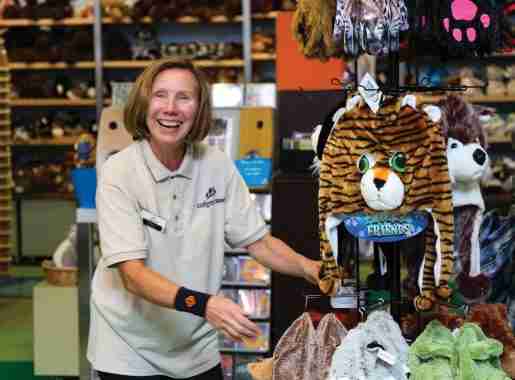 Mirka Szymanowski, retail team lead, with the Calgary Zoo, photographed with hats. Textiles are separated into adult, youth and child sections at the store.
Mirka Szymanowski, retail team lead, with the Calgary Zoo, photographed with hats. Textiles are separated into adult, youth and child sections at the store.Appealing to Clientele
In an effort to appeal to its vast demographic, Six Flags shops all markets and stays focused on its consumers. “While much of the buying is done from our offices in Grand Prairie, Texas, our parks can identify regional trends and act on them by partnering with us,” said Jason Weatherford, corporate director of retail, merchandising and imaging, Six Flags Entertainment, Grand Prairie, Texas. A great example is the double strap Hawaiian sandal. This trend hit its Texas parks in 2015. The retail manager at Six Flags Over Texas saw the trend develop, and the corporate team partnered with her to quickly source the item. It remains a Texas trend to this day. Six Flags retail locations range from 7,000 to more than 25,000 square feet.
Swinimer travels to U.S. gift shows where she is introduced to new lines that are often not yet available in Canada, or only in minimal locations. This year’s new lines included Gorilla Gym and LaserGifts’ Swing Thing.
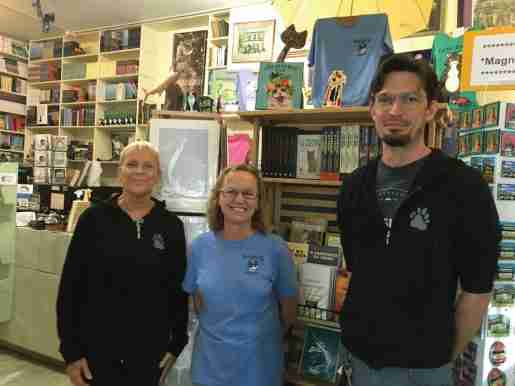 Hemingway Home Museum Bookstore Manager Melanie Mosher with assistants Lorie and Wayne. In addition to Ernest Hemingway merchandise, the store sells products made by local artists.
Hemingway Home Museum Bookstore Manager Melanie Mosher with assistants Lorie and Wayne. In addition to Ernest Hemingway merchandise, the store sells products made by local artists.For Boston Children’s Museum’s guests, the focus is on play and simplicity of product. “Customers want to purchase something memorable, but also want their little ones to enjoy it,” Hill said. “Our youngest customers can be easily overwhelmed by all of the shop’s options, so we have worked to streamline and simplify choices. It makes the guest experience a lot easier and approachable for grown-ups as well.”
Limited space keeps Mosher focused on what sells and is unique to the museum. She doesn’t carry trendy products. For children, she carries books, stuffed cats and notepads and coloring books featuring cats.
In order to appeal to its broad customer base, Ted Frankel, owner of Sideshow, the gift shop at American Visionary Art Museum, Baltimore, Md., offers items as low as three for 25 cents to thousands of dollars.
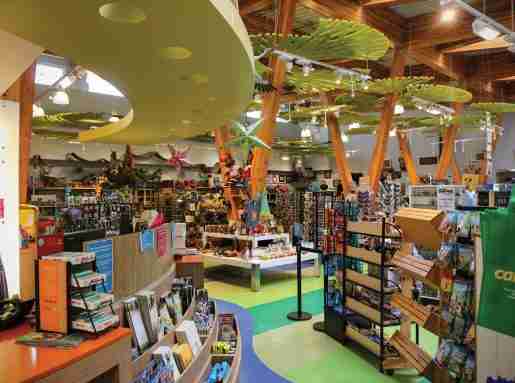 A view of the colorful sales floor at The Calgary Zoo. “Retail should be ever changing,” the retail operations manager said. “We regularly remerchandise almost all of our product lines to create new and interesting looks.”
A view of the colorful sales floor at The Calgary Zoo. “Retail should be ever changing,” the retail operations manager said. “We regularly remerchandise almost all of our product lines to create new and interesting looks.”display at the Boston Children’s Museum. The store features a souvenir section near the cash wrap.
An Emphasis on Customer Service
Friendliness and helpful customer service are key to increasing sales revenue. “We expect staff members to stop what they are doing when a guest is within six feet of them, and initiate a positive interaction,” Swinimer said. For example, they might say something like, “How was your zoo visit today?” or “Did you see your favorite animal?” Then, they should show products of that species.
Staff are also encouraged to learn about the gift shop’s products— especially its conservation lines— and share information and benefits to guests. Furthermore, Swinimer empowers employees to make decisions that are in guests’ best interest. For example, provide a small discount if they are unhappy about something that happened during their visit.
In the fast-paced world of theme park retail, it’s important for guests to have a team member help them at different levels of the shopping experience. “Guests are pressed for time when visiting a theme park, as they are trying to experience as much of the park as possible,” Weatherford said. “For Six Flags, being fast and friendly are important.”
At Boston Children’s Museum Gift Shop, which is 1,650 square feet, employees play with its products. “If we are having fun, guests will want to do the same and will want to take a special item home with them,” Hill said.
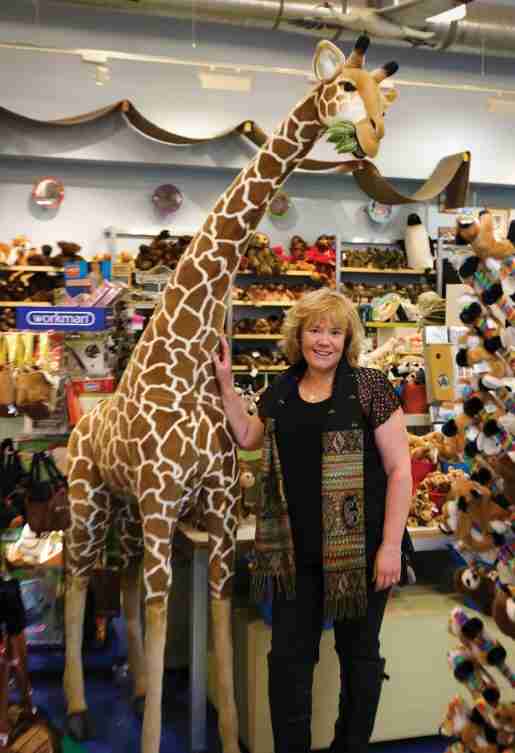 Kathryn Swinimer, retail operations manager, Calgary Zoo, Calgary, Alberta. Plush is arranged by species, and/or country of origin at the store, according to Swinimer.
Kathryn Swinimer, retail operations manager, Calgary Zoo, Calgary, Alberta. Plush is arranged by species, and/or country of origin at the store, according to Swinimer.Frankel said that when someone enters the shop, they should be acknowledged. “People love stories, especially about the products and original art,” he said. “When they know a bit more about a product, they are more comfortable with their purchase.”
Other Strategies
At Calgary Zoo, staff members push carts around the zoo to promote and sell certain product lines. “This tactic increases our revenue by putting products in front of guests who may not enter the shop,” Swinimer said.
Mosher said vendors are always on the lookout for unique cat-related items. In addition, a private book vendor finds great titles of books and movies.
Best-Sellers
For the second year in a row, the best-selling item at Calgary Zoo was its light-up bubble wand from Light-Up Toys. “This item doesn’t have anything to do with a zoo, but it’s fun and unique,” Swinimer said.
Personalized products are continuing to prove quite popular. Necklaces from Wayne Carver; street signs from Niagara River Trading Company; name stamps from Danbar; and name frames from Bucket Wonders’ EveryName program all have decent sell-through, Swinimer said.
At the Hemingway Home Museum, the top seller is usually Hemingway’s Pulitzer Prize-winning novella “Old Man and the Sea.” In second place is its unique blue and white patterned cat bowls that are a replica of the bowls used on the property since the museum opened. Of course, magnets and prints of the museum are big sellers as well.
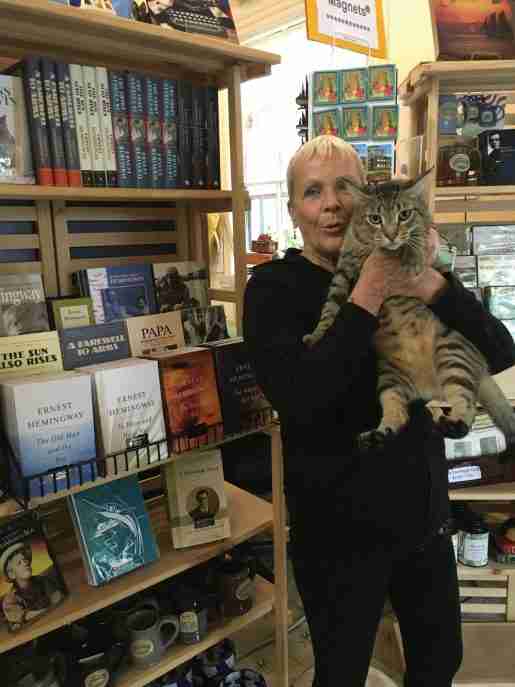 Melanie Mosher, bookstore manager, Hemingway Home Museum in Key West, Fla., photographed with one of the resident shop cats. The store stocks souvenirs and gifts related to reading, writing and cats to commemorate the life and work of Ernest Hemingway.
Melanie Mosher, bookstore manager, Hemingway Home Museum in Key West, Fla., photographed with one of the resident shop cats. The store stocks souvenirs and gifts related to reading, writing and cats to commemorate the life and work of Ernest Hemingway.